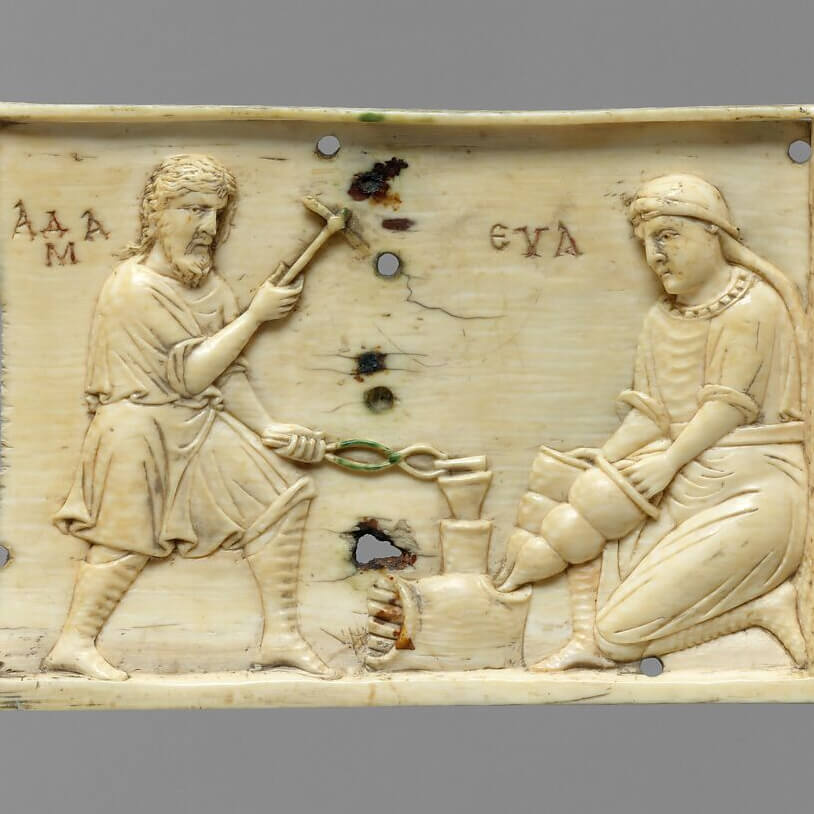Shopkeepers, retail merchants, and artisans were the backbone of the urban middle class, both in Constantinople and in provincial towns.
The artisans.

The social structure of a craft workshop is comparable to that of a peasant farm. The master craftsman works with his family in the shop he rents, using tools and raw materials he owns. Custom work is quite rare. However, some trades employ salaried workers, and the number of slaves is significant because they are necessary for a master craftsman to open a second workshop. This second workshop would be managed by a slave, a salaried worker or a manager. At least in Constantinople, the legislation aims to prevent an excessive concentration of workshops. But in some provincial towns, workshops exceeding the family framework existed, especially for the production of silk fabrics. For example, in Thebes in the 12th century, a significant part of the highly skilled workforce was Jewish.
We have an idea of the prices and rents of shops in Constantinople. Prices, amounting to several pounds of gold, are very high and beyond the reach of most artisans, and even more so for workers aspiring to become master craftsmen. Like for the peasantry, this limits the possibility of social promotion through economic means.
Shops, like urban land, are owned by aristocrats or ecclesiastical institutions, both the cathedral and monasteries. Rents asked for these shops are more reasonable than their price. However, the net profit margin of shopkeepers, after paying expenses and the modest tax on their shops, remains limited. Artisans are generally safe from poverty but do not have the means to rise above their condition by purchasing their shops.
The economic, and particularly commercial, prosperity noticeable from the 11th century also benefits the artisans and shopkeepers. It offers a means of social advancement for their sons, because private and paid education is accessible to those who can afford it. This allows a shopkeeper’s son to try finding a position in the administration, thereby moving closer to the ruling class. Some emperors may encourage this movement. The chronicler Michael Psellos criticizes several 11th-century emperors, particularly Michael VI (1056-1057), for granting promotions based on merit. However, the Comnenian period, starting from 1081, is characterized by an aristocratic reaction that soon ends this merit-based promotion.
The merchants.
The great marchants engaging in long-distance commerce are poorly known, except at the very end of the empire. Indeed, their arhives have not reached us. Shipowners existed in Constantinople. They organized themselves into companies to pool their capital or associate capital with an itinerant merchant, as commerce was most often maritime and, in any case, very risky.
The commercial expansion that manifested from the 10th century greatly benefited them. A peculiarity of the Byzantine system of dignities was that the emperor sold them, at least up to the rank of protospatharios. Under Leo VI, at the beginning of the 10th century, it cost between 12 and 18 pounds of gold, which was affordable for a wealthy merchant. This dignity granted entry to the Senate. Michael Psellos reproached Constantine Monomachos (1042-1055) for “opening the Senate to almost the entire crowd.”
Alexios Komnenos reacted vigorously. He allowed his troops to mistreat such senators, notably by forcing them to walk on foot. The privileges attached to senators were denied to them, even if they were nominally senators. This is evident from a 12th-century trial involving a woman against her uncles. However, Alexios did not forbid senators from engaging in commerce, and thus the aristocracy could participate. The aristocracy had long been involved in manufacturing: silk fabrics made in the houses of the powerful had competed with the products of full-time artisans since at least the 10th century.
This trend, along with the competitive advantages granted by the imperial power to Italian merchants in exchange for short-term political, economic, or military support, explains why Byzantine merchants were gradually supplanted by their Italian counterparts during the 12th century, fueling in reaction the anti-Western sentiment among part of the Byzantine population.
Under the Palaiologoi, the aristocracy was then ruined, there were no more lands, and the state coffers were empty, making it impossible to pay the salaries once attached to functions and dignities. Many aristocrats then allied with Western merchants, particularly Genoese or Venetians, to benefit from the revenues derived from large-scale commerce. Those who remained in Constantinople after 1453 continued in this vein.